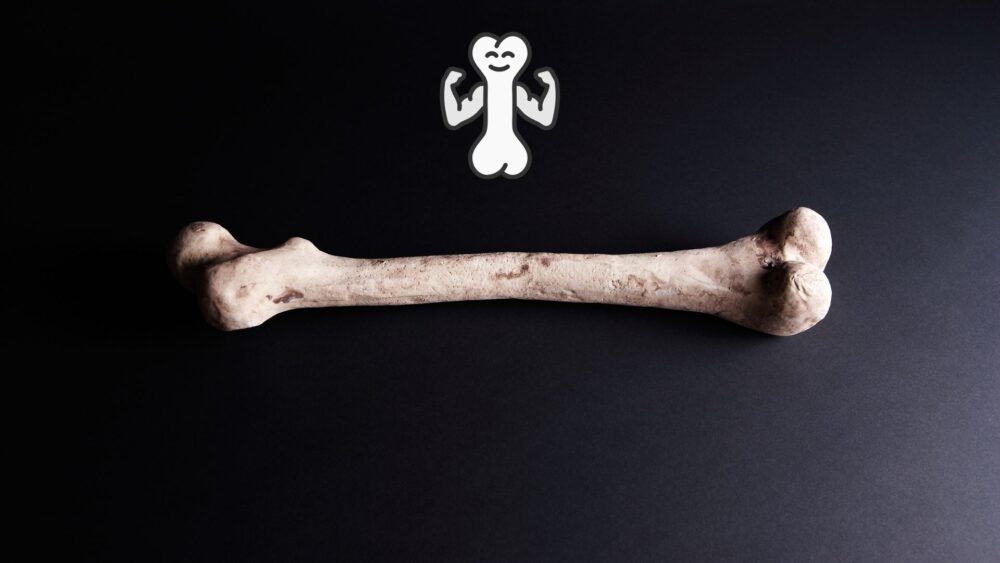We all know the incredible power of strength training but do you know it can also help build resilient, dense bones? Bones are a important part of human form, I am glad we agree on that. They become porous and brittle if not taken care of. Yes, bone health is overlooked until you get an injury and realize that your bones were this weak and you didn’t even know. Healthy bones are a foundation to active and injury-free life, they quite literally support you. It is quite easier to maintain them besides just eating calcium supplements. In this article we will see some fascinating information, so stay with me. (Disclaimer)
Table of Contents
How does resistance training remodel bones?
Bone remodeling is a natural process where old bone tissue is replaced by new tissue. This process slows down with age, leading to a decrease in bone density and a higher risk of fractures. Strength training plays a key part to prevent this decline.
How it works

Strength training creates mechanical stress on your bones. This pressure triggers the activity of osteoblasts (cells that build bone) to lay down new bone tissue, enhancing its density and structure.
What’s fascinating is that this response is site-specific. For example, performing squats strengthens the femur, while pressing exercises fortify bones in the arms and shoulders. This means targeting different muscle groups during workouts can systematically improve your entire skeletal system.
Strength Training’s Role Across Different Life Stages
As you age the demand of your body changes. Let’s see what can be done and when
Young Adults
This is the prime time to maximize bone density because the skeleton reaches peak mass around age 30. Strength training during these years can lay a robust foundation for lifelong bone health.
Middle Age
By your 40s and 50s, bone density begins to decline. Regular resistance exercises can slow this process, helping to prevent osteoporosis and related fractures.
Seniors
Even in older adults, strength training remains effective. Studies show that it can reverse age-related bone loss and significantly reduce the risk of falls. For seniors, resistance bands or lighter weights can be a safe starting point.
Benefits of Strength Training for Bone Health
We have learned how bone remodeling works and how strength training places stress on bone tissue to trigger activity of osteoblasts. Let me show you some of its benefits.

Enhanced Bone Quality
Bone density is just one measure of bone health. The quality of your bones—such as their microarchitecture and ability to resist fractures—also improves with strength training.
Improved Balance and Fall Prevention
Strength training strengthens not only your bones but also the muscles responsible for stability. This dual benefit significantly reduces the likelihood of falls, which are a leading cause of fractures in older adults.
Prevention of Sarcopenia
Sarcopenia, or age-related muscle loss, often leads to weaker bones. By maintaining muscle mass through resistance training, you indirectly support bone health as well.
Hormonal Boost
Strength training triggers the release of hormones like testosterone and growth hormone, both of which play a role in bone remodeling.
Let’s compare Strength Training to Other Exercises
Don’t confuse strength training with aerobic exercises. While cardiovascular activities like running or cycling have health benefits, they don’t match the bone-building capacity of strength training.
| Exercise Type | Bone Health Benefits | Examples |
|---|---|---|
| Strength Training | Best for increasing bone density | Squats, deadlifts, presses |
| Weight-Bearing Cardio | Moderate benefits | Running, hiking |
| Non-Weight-Bearing | Minimal benefits | Swimming, cycling |
The Nutrition Connection
Just doing strength training without proper diet is not going to make your bones stronger. How will osteoblast generate if they don’t get what they need. Proper nutrition plays the role of a middle man between training and bone health. Let’s see what you need for getting the most out of your workouts.

- Vitamin D and Calcium: Necessary for calcium absorption. Sunlight is a natural source, but supplements may be needed in areas with limited sun exposure.
- Magnesium and Zinc: These minerals support bone structure and repair. Nuts, seeds, and whole grains are excellent sources.
- Protein: Preferably animal based, protein is critical for collagen production, which forms the foundation for bone mineralization.
Concerns and Misconceptions
Does Strength Training Only Benefit Young People?
Actually, individuals in their 70s and 80s can see significant improvements in bone density and muscle strength through resistance training.
What About People with Osteoporosis?
Consulting a fitness professional or physical therapist is advised. Strength training is still beneficial but should be tailored to avoid high-impact movements.
Research Highlights
Strength Training and Osteoporosis Prevention
A meta-analysis published in Osteoporosis International found that resistance exercises significantly increase bone density in postmenopausal women.
Hormonal Impact on Bone Health
A study in The Journal of Clinical Endocrinology & Metabolism highlights how strength training boosts anabolic hormones critical for bone remodeling.
The Role of Nutrition in Bone Health
Research in The American Journal of Clinical Nutrition emphasizes the synergy between resistance training and adequate calcium and protein intake for optimal bone density gains.
Personal Prospective
Over the years, I’ve seen the transformative power of strength training—not just for my muscles but for my entire body’s structure. It’s humbling to think about how these exercises are protecting me from future issues like fractures or osteoporosis.
Building strong bones is about more than just health—it’s about ensuring independence and vitality as we age. If you haven’t already started prioritizing bone health, let today be the day you begin.
- Beyond The Diet: My Unexpected Discoveries With Intermittent Fasting – January 11, 2025
- Shilajit: A Deep Dive Into The Himalayan Elixir – January 5, 2025
- A New Year’s Resolution for True Strength: Eating Right – December 29, 2024

Leave a Reply